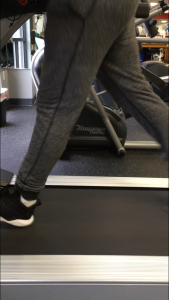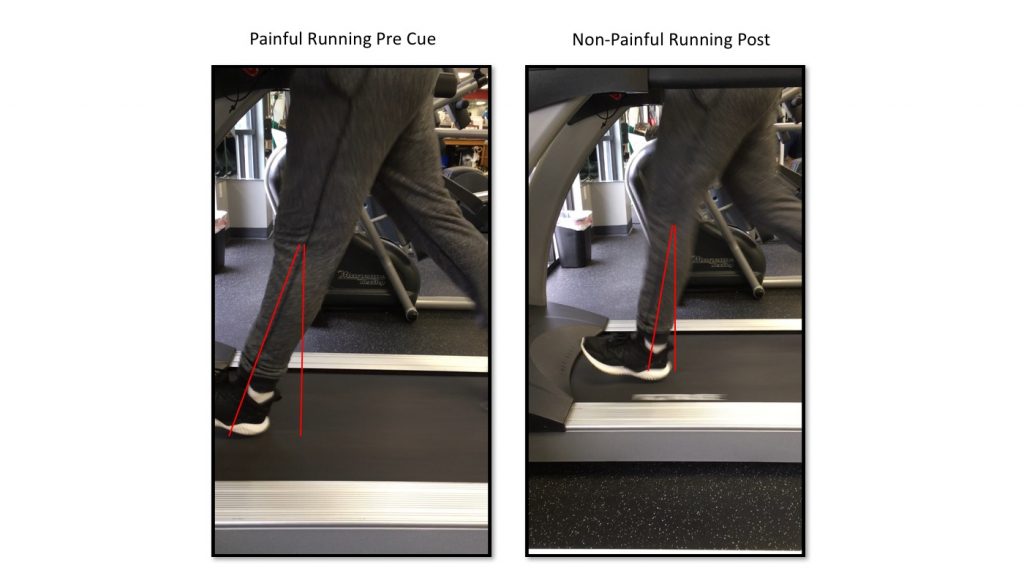Shin splints are a runner’s worst nightmare. It’s a catch-all term that most commonly refers to runners suffering from pain along the medial tibia. It can also progress into stress reactions as well as afflict runners along the antero-lateral portion of the tibia. Commonly, rehab focuses on modalities to calm the pain, strengthening exercises for the lower leg and hips, and stretching. Many patient’s see symptom reduction, but many also see a return when they begin to increase their mileage again. It’s frustrating for the therapist and even more so for the runner.
I want to focus on a small change you can make to runners that pays huge dividends when they are experiencing pain along the antero-lateral tibia. To effectively treat this, you need to understand a basic premise, the tibialis anterior is typically working too hard during the gait cycle and we need to change that.
Let’s take a look at a runner and the exact moment we are concerned about, initial contact. You may notice a couple of things about this runner, but much of the deviation stems from how far in front of their body the foot is striking. We call this runner an over-strider and it can contribute to a number of co mmon running injuries, in this case pain, along the tibia.
mmon running injuries, in this case pain, along the tibia.
If you take a look at the most distal portion of the chain, you’ll notice the dorsiflexion angle is quite high. As you trace your way proximally, you’ll also notice the knee is hyperextended. So how does this combination of an excessively dorsiflexed ankle, hyperextended knee, and striking far in front of the center of mass create such a large problem? All of these combine to place an extremely high demand on the dorsiflexors to eccentrically control the foot as the runner transitions from foot strike towards mid stance!
So let’s fix it! The easiest way to start is to simply cue the runner to increase the cadence they run with. Typically, a 5% increase is sufficient and can easily be cued by a metronome or even more easily with a running watch that measures running dynamics. This runner required some additional work on various mobility and stability throughout the lower extremities as well as directed treatment to calm the tibialis anterior. Our greatest change occurred when he became comfortable landing less extended and reducing the demand on the painful tibialis anterior and tibia. You can see the change below.
Want to “Become a Hero to Runners”? Join us for a Certified Gait Analyst Course.
Looking for more ideas on running, rehab, and thought provoking ideas? Follow me on Twitter.